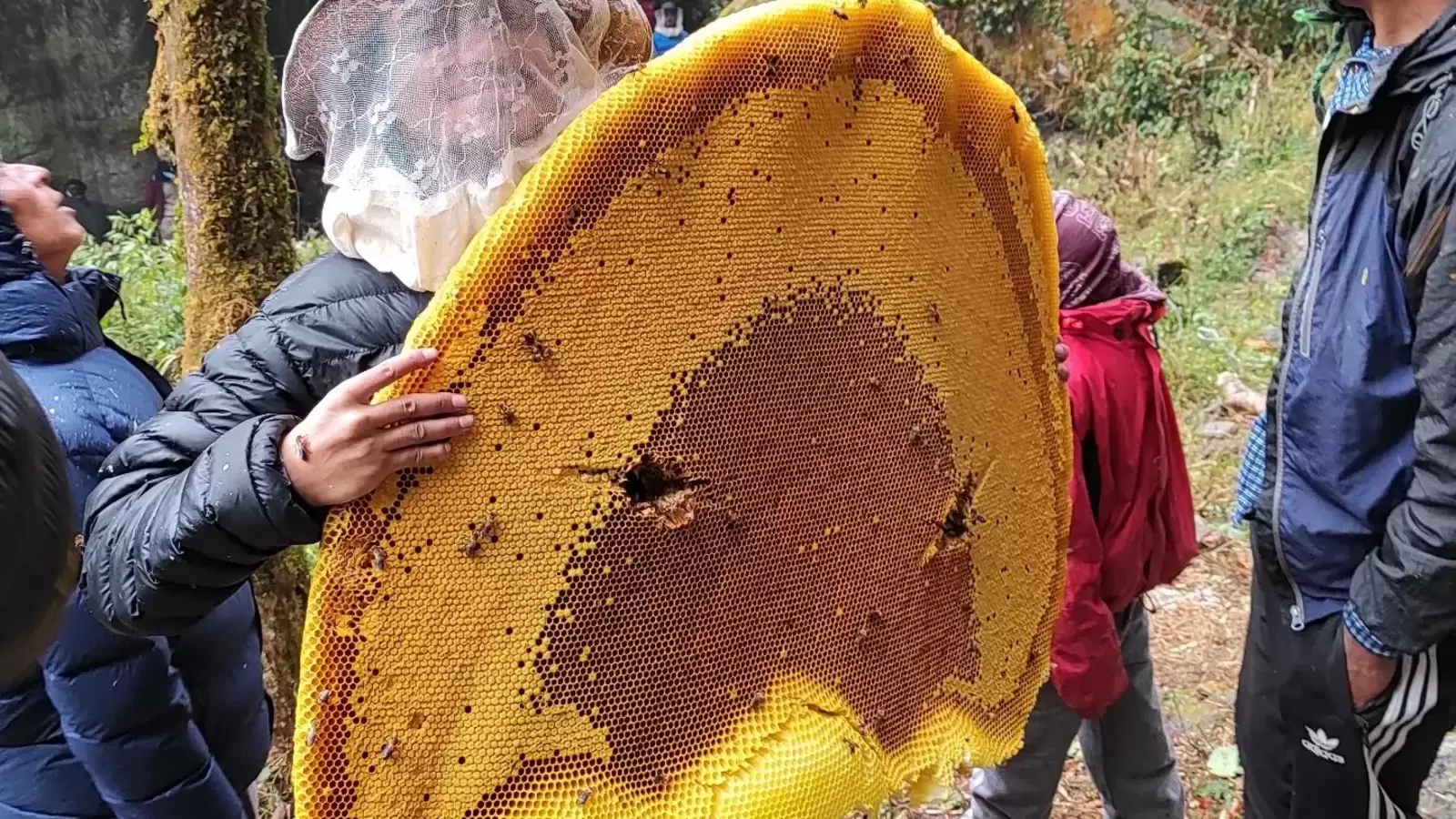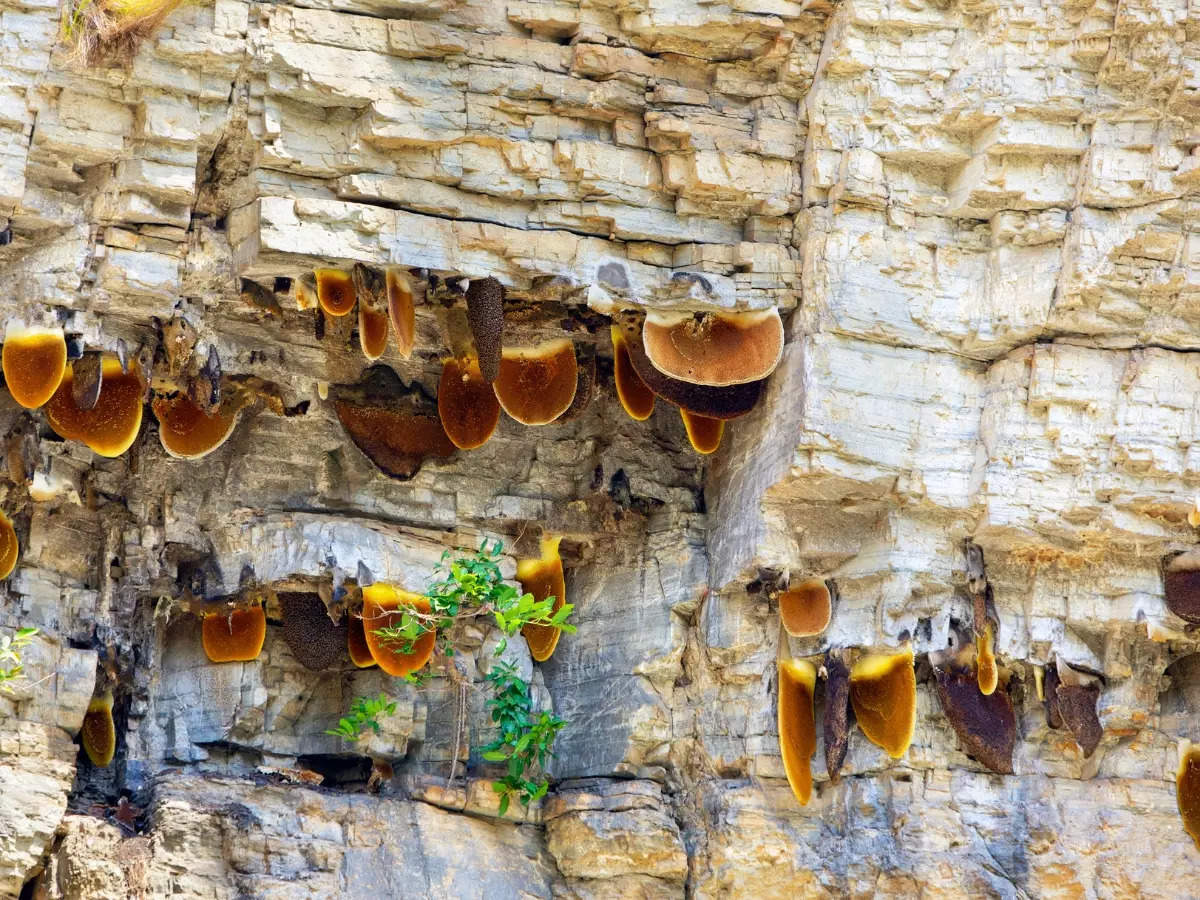Nepal’s Ma.d Honey That Causes Hallucinations (They climb to go insane)
Mad honey, known locally as “red honey” due to its distinctive deep red or amber color, is a highly coveted substance harvested primarily by the Gurung people of Nepal. This honey contains grayanotoxins, toxic compounds found in the nectar of certain rhododendron flowers.
When ingested in small amounts, these grayanotoxins can induce mild euphoria, relaxation, and visual hallucinations. However, in larger doses, the effects become dangerously potent, leading to nausea, severe dizziness, slowed heart rate, temporary paralysis, and in extreme cases, even death.
The honey-hunting process is one of the most treacherous in the world, as it takes place on the towering cliffs of the Himalayas, some of which reach heights over 300 meters (about 984 feet). The Gurung tribe has been practicing this ritual for centuries, and it is considered a sacred tradition, one passed down through generations. Honey hunters prepare themselves both mentally and spiritually, often engaging in rituals or prayers to appease the mountain spirits, believed to protect or harm them depending on their reverence.
The journey to the hunting site is rigorous. Hunters often trek for hours or even days through dense forests and rugged mountain paths, carrying their gear on their backs. Equipment includes handmade bamboo ladders, bundles of burning leaves (used as natural smoke to calm the bees), and protective masks made from local materials. The ladders are anchored to stakes at the top of the cliff, often tied with simple ropes that provide minimal stability, making each step a life-risking endeavor.
Upon reaching the cliffside, the hunters face the Himalayan giant honeybee (*Apis laboriosa*), which is the largest honeybee species in the world, measuring about 3 centimeters (1.2 inches) in length. These bees are far more aggressive than typical honeybees, especially when protecting their hives. Each hive can house tens of thousands of bees, and the hunters are stung repeatedly as they carefully cut sections of the honeycomb.
Using smoke, the hunters attempt to calm the bees, but the smoke’s effect is temporary, and the bees’ defensiveness intensifies the closer they get to the comb.
When the honeycomb is removed, it’s divided into sections based on color and potency. The deep red sections contain the highest concentration of grayanotoxins and are the most desired for their hallucinogenic properties, while lighter sections are safer for general consumption. The honey is then strained and packaged, often with visible layers of dark amber at the top and lighter honey below.

Mad honey fetches a high price internationally due to its unique properties. The honey is often sold as a rare delicacy and natural medicine, believed to provide health benefits such as improved blood circulation, alleviated hypertension, and enhanced sexual performance. Some small batches make their way into markets in countries like Japan, South Korea, and parts of Europe, where it is sold as an exotic product. Prices can reach upwards of $500 per kilogram due to the honey’s rarity, difficulty of harvest, and demand.
Consumption of mad honey, however, is carefully controlled in the Gurung community. Traditionally, it’s used as a remedy for joint pain, gastrointestinal issues, and anxiety. Elders consume small amounts as a daily tonic, swearing by its restorative effects. However, there’s an acute awareness of its dangers. It’s said that newcomers or tourists, unaware of its potency, are warned not to exceed a single teaspoon to avoid the adverse effects. Excess consumption has led to incidents of mad honey poisoning, causing temporary paralysis and hospitalizations.
This honey has historical significance beyond its medicinal use. In ancient warfare, it was used as a weapon; one well-known instance dates back to 67 BC, when King Mithridates of Pontus reportedly tricked invading Roman soldiers by leaving jars of mad honey along a path. Roman soldiers consumed the honey and became severely incapacitated, leaving them vulnerable to Mithridates’ forces. This clever tactic, called “honey poisoning,” remains a notable story of ancient biochemical warfare.
Today, mad honey harvesting continues to be a dangerous, culturally significant tradition. For the Gurung people, it’s not only a source of income but also an expression of their resilience and deep connection to the land.
As the older generation of honey hunters ages, there is concern that the tradition may fade, as fewer young people are willing to endure the dangers and hardships involved. However, some efforts are being made to preserve the practice through eco-tourism, where travelers can witness the harvest and learn about the cultural heritage behind mad honey, providing a lifeline to keep this ancient tradition alive.









